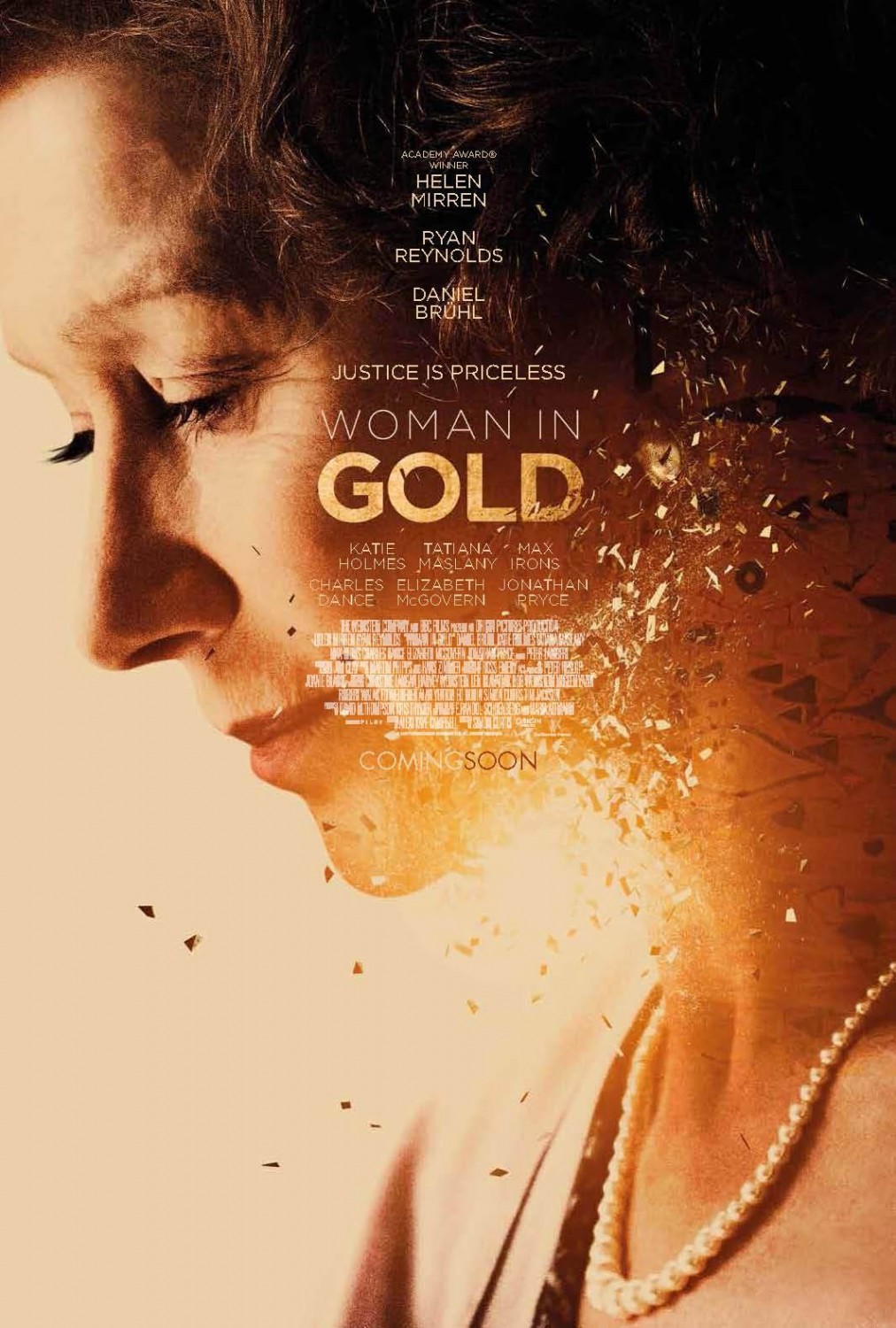Somewhere in the movie Woman in Gold is a pretty good movie. In fact, the secondary movie is actually a better movie than the main movie… which makes the main movie just seem like less of a movie.
It’s based on the true story of Maria Altman (Helen Mirren), an Austrian World War II refugee who is staking her claim to Gustav Klimt’s Portrait of Adele Bloch-Bauer I (known as the Austrian Mona Lisa), a 1907 painting of Maria’s aunt. It was seized by the Nazis, however, and when the war ended, the ownership of the painting came into question. Austria’s state-owned Belvedere Museum said it was theirs, Maria claimed it was hers, and there were also two conflicting wills that only muddled things further.
Helping Maria in 1998 Los Angeles (where she emigrated to during the war) is newbie lawyer Randy Schoenberg (Ryan Reynolds), grandson of the famous Austrian composer. He’s a baby-faced novice who ends up quitting his job at a high-powered firm and putting all his eggs in Maria’s basket. Along the way he runs into plenty of predictable obstacles, including (mild) financial woes and the demands of his family: wife Pam (Katie Holmes) just had their first child, and another is on the way.
Interspersed with the present day (well, 1998) goings-on is a series of flashbacks– from the origins of the painting through to its thirty-years-later looting by the Nazis. And it’s only then that the movie finally gets a pulse. Anchored by a riveting performance by Orphan Black’s Tatiana Maslany as young Maria, Woman in Gold, in those moments, has all the makings of a powerful, even terrifying movie– a far cry from the ambling, legalese-driven yawn that makes up the main story.
Mirren, as usual, is as good as it gets. It’s a complex, multi-layered role, and she more than does it justice. Reynolds, however, is horribly miscast, evoking his dopey character Andrew in 2009’s The Proposal instead of a lawyer worthy of Maria’s trust and confidence. (We’re meant to believe that she trusts him only because of their shared Austrian roots.)
The main culprit here, though, is first-time screenwriter Alexi Kaye Campbell, who can’t figure out a way to effectively juggle the two story lines. Whenever the film switches back to the Mirren/Reynolds main plot, it’s always a jarring disappointment, leaving me wanting to quickly return to the powerful, emotional scenes of the 1940s.
Director Simon Curtis (My Week with Marilyn) cobbled together the film as best as he could, given the script, but the end result is too much of an uneven mess to be an effective, entertaining movie as a whole.
Woman in Gold now joins George Clooney’s 2014 film The Monuments Men as yet another wasted opportunity to shine the light on one of the 20th century’s most fascinating (and ongoing) stories. Someday someone will make a worthwhile movie about the Nazis’ looting of priceless art and artifacts (besides Raiders of the Lost Ark, of course), but unfortunately this isn’t it. (Note: I have not yet seen John Frankenheimer’s 1964 Nazi/art heist film The Train, but it currently holds a 100% rating on Rotten Tomatoes, so presumably there’s hope.)
2.5/5 stars
